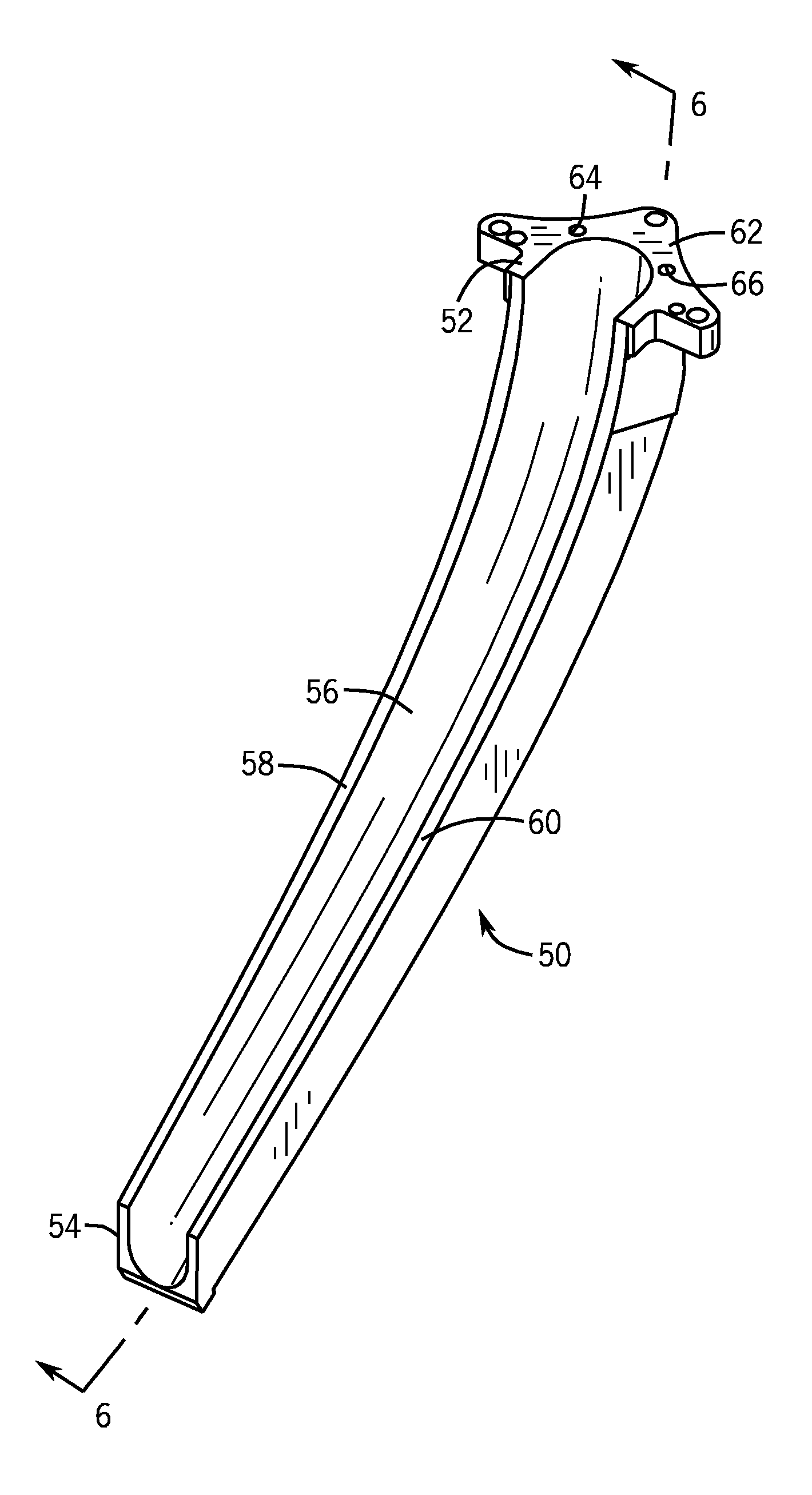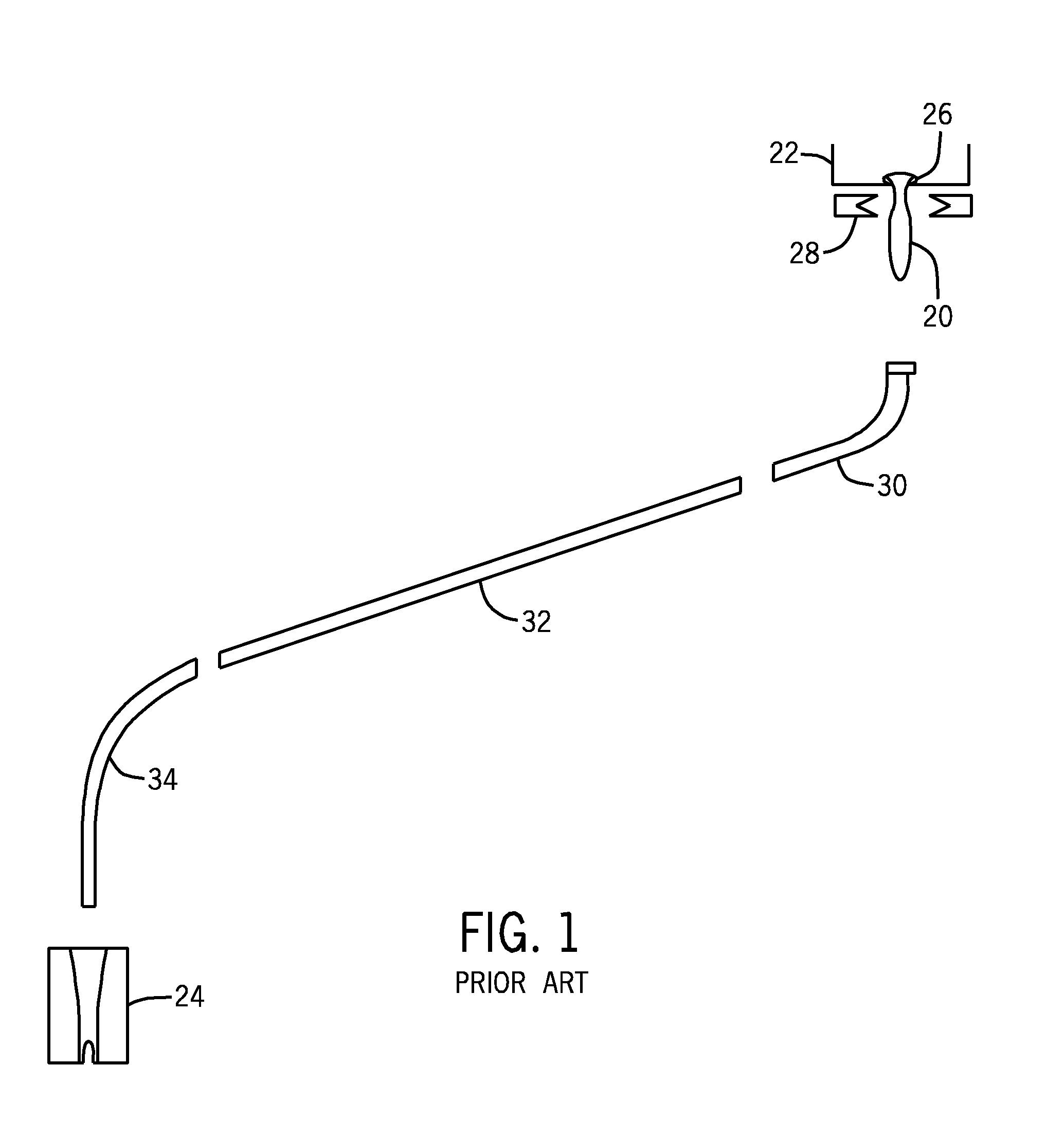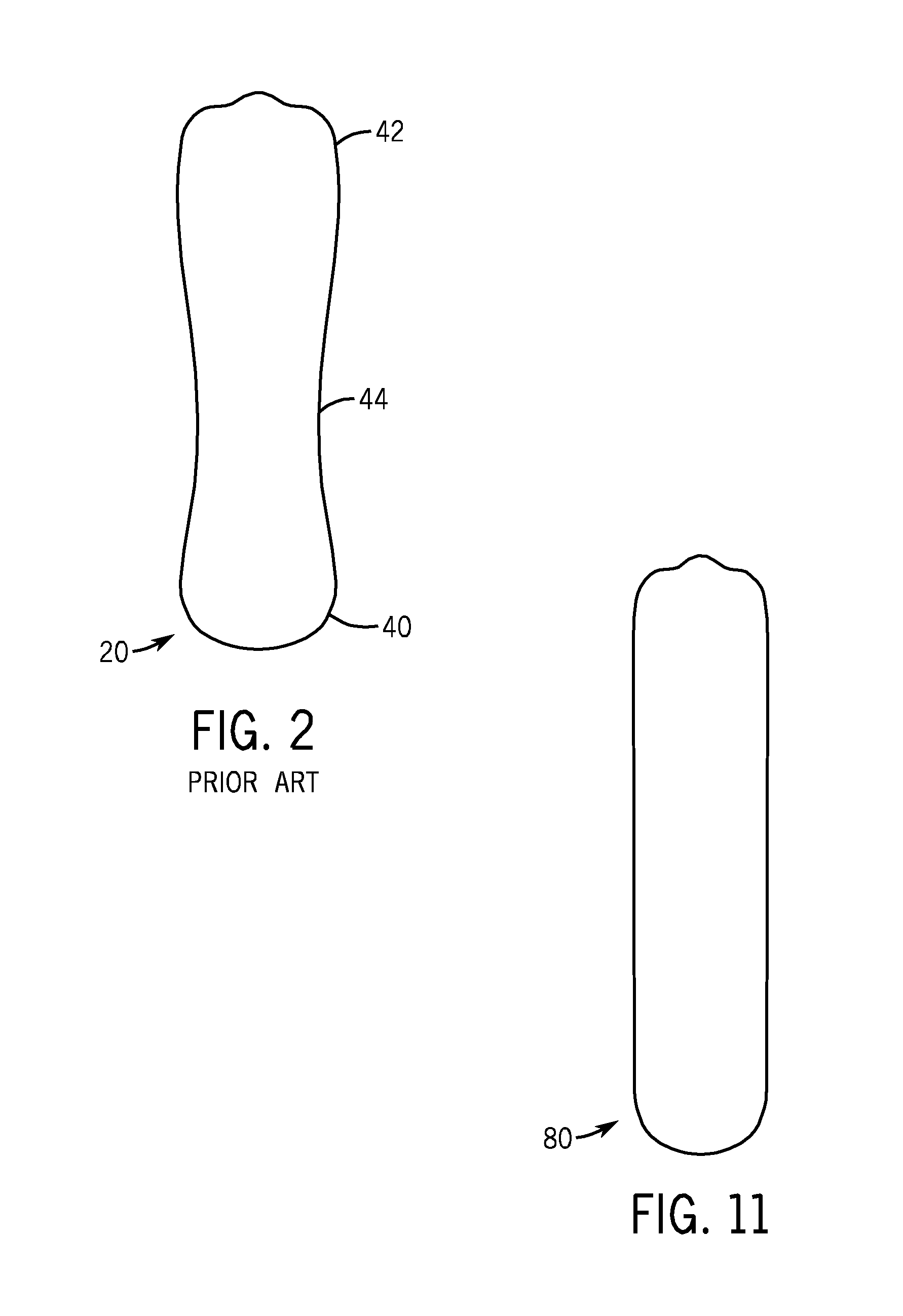Optimized Scoop for Improved Gob Shape
a technology of optimizing which is applied in the field of optimizing the scoop for can solve problems such as glass container defects, and achieve the effects of improving the centripetal force, and improving the shape of the gob
- Summary
- Abstract
- Description
- Claims
- Application Information
AI Technical Summary
Benefits of technology
Problems solved by technology
Method used
Image
Examples
Embodiment Construction
[0033]Prior to discussing the exemplary embodiment of the present invention, it is helpful to briefly describe the location and function of a scoop in a generic glass gob delivery system used to supply glass gobs to an I.S. machine. Referring to FIG. 1, such a glass gob delivery system is illustrated in schematic form depicting the gravitational delivery of a glass gob 20 from a gob feeder 22 to a parison mold 24. Molten glass exits the gob feeder 22 through an orifice 26 in the bottom of the gob feeder 22, and is cut by a schematically depicted glass gob shear mechanism 28 into a sequence of glass gobs 20.
[0034]The glass gobs 20 fall downwardly into the top end of a scoop 30 that is curved to redirect the glass gobs 20 from a vertical trajectory to a diagonal trajectory, and from the bottom end of the scoop 30 into the upper end of an inclined trough 32. From the lower end of the trough 32, the glass gobs 20 are directed into the top end of a deflector 34 that is curved to redirect...
PUM
| Property | Measurement | Unit |
|---|---|---|
| acute angle | aaaaa | aaaaa |
| diameters | aaaaa | aaaaa |
| diameters | aaaaa | aaaaa |
Abstract
Description
Claims
Application Information
 Login to View More
Login to View More - R&D
- Intellectual Property
- Life Sciences
- Materials
- Tech Scout
- Unparalleled Data Quality
- Higher Quality Content
- 60% Fewer Hallucinations
Browse by: Latest US Patents, China's latest patents, Technical Efficacy Thesaurus, Application Domain, Technology Topic, Popular Technical Reports.
© 2025 PatSnap. All rights reserved.Legal|Privacy policy|Modern Slavery Act Transparency Statement|Sitemap|About US| Contact US: help@patsnap.com



